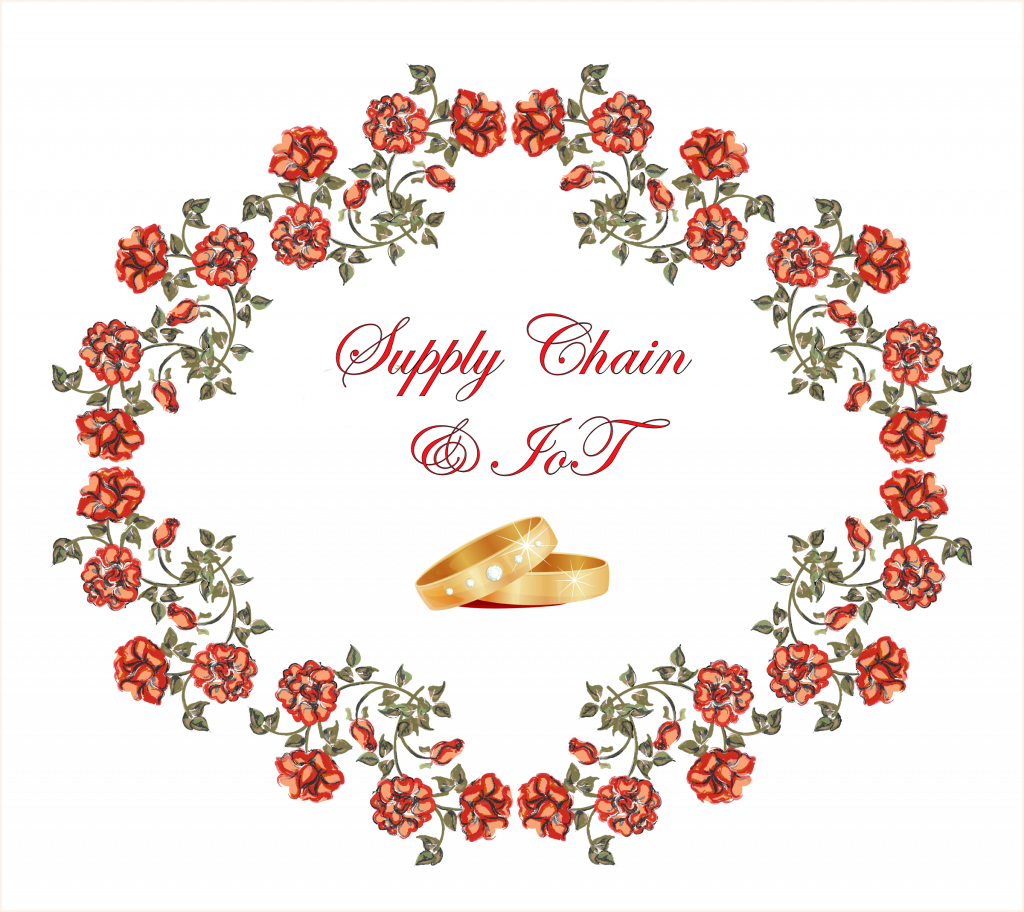In the mid-1960s, the Dixie Cups released their hit tune “Chapel of Love” and accomplished the unthinkable — they dislodged a Beatles hit from the top of the Billboard Chart. The opening lyrics to that song are:
Goin’ to the chapel and we’re gonna get married
Goin’ to the chapel and we’re gonna get married
Gee, I really love you
And we’re gonna get married
Goin’ to the chapel of love
Peter Nilsson, President of Performance Public Relations, believes those lyrics could be sung about the supply chain and the Internet of Things (IoT). He writes, “Some things in life are just meant to be together and that now includes the Internet of Things (IoT) and the supply chain. But not so long ago, few imagined such a marriage could exist. Many supply chain executives were comfortable with age-old practices and processes that had served them well for decades.”[1] Nilsson states he started thinking about this marriage following a conversation with a logistics provider who couldn’t “imagine a world where the supply chain would one day live happily ever after with IoT, raising (growing) dozens of vertical markets together.”
The IoT needed to grow up
Undoubtedly, the logistics provider with whom Nilsson discussed the marriage of the supply chain and the IoT believed the latter was too immature to be a responsible partner. Nilsson insists, however, “The now wholly symbiotic relationship between IoT (then known as M2M) and the supply chain has been going through periods of incubation, maturation and enhancement for many years now — and there is no end in sight.” Andrew Thomson, founder of VentureRadar, highlights how quickly the IoT has matured. He reports, “Worldwide spending on IoT is constantly growing, and is forecast to reach $745bn this year, an annual increase of almost $100bn. The vast majority of that spend is by businesses looking to improve operational efficiency and find new revenue opportunities. Rising demand is also supporting a growing ecosystem of more than 4,500 IoT technology developers globally.”[2] Like Nilsson, he sees the supply chain as a natural partner for the IoT. He explains, “One of the biggest opportunities for companies is in the IoT-enhanced supply chain. By connecting goods, assets and people, it’s possible for companies both to improve supply-chain efficiency and unlock new revenue opportunities.”
I may be stretching the marriage analogy a bit too far when I assert the IoT came with a dowry of connectivity; nevertheless, Thomson explains, “IoT-enhanced supply chains are driven by three improved capabilities that come from integrating objects and devices into a multi-connected network.” Those improved capabilities are:
Improved asset-condition monitoring. Thomson writes, “With smart sensors having the power to monitor any object, IoT solutions can bring detailed insights into the precise condition of inventory. … This level of visibility directly addresses one of the biggest challenges of the supply chain: ensuring that goods arrive intact and usable.”
Improved asset-location tracking. “In addition to monitoring the condition of items,” Thomson writes, “IoT systems can track their location at all times. … Beyond monitoring individual items, IoT can provide an overview of the fleet, enabling tighter control over product movement.”
Advanced analytics. Nilsson writes, “The unprecedented volume of data that IoT systems generate provides companies with the opportunity to gain specific insights into operations using advanced analytics. Real-time performance monitoring is accompanied by opportunities for predictive analytics.” For most organizations, advanced analytics capabilities will be embedded in cognitive platforms that leverage data throughout the enterprise, including the supply chain.
Thomson goes on to describe a number of other benefits the IoT gain bring to the relationship. I encourage you to read his entire article.
How the marriage works
Laetitia Jay, Chief Marketing Officer with Sigfox, explains how the marriage of the supply chain and the IoT can result in wedded bliss. She writes, “The internet of things offers increased visibility into every step of the supply chain. IoT-enabled devices can capture valuable bits of data throughout a shipment’s journey, providing organizations with a holistic view of the supplier network. With IoT sensors attached to containers, organizations can keep tabs on a shipment’s whereabouts and condition up and down the supply chain.”[3] She cautions, however, that the marriage requires more than a love for new technology. “The real value of IoT sensors,” she writes, “is only realized if there’s tangible business value.” Vikash Kumar (@vikashv2v), a digital marketing enthusiast, believes making a business case for IoT in the supply chain isn’t difficult. He predicts, “IoT is set to revolutionize the supply chain — both in terms of its operational efficiencies and revenue opportunities — by making it transparent. In the present day, the supply chain is not just a way to keep track of your product, but also a way to gain an edge on your competitors by building your own brand.”[4]
Before we get too starry-eyed over IoT, Nilsson reminds us it does have one glaring flaw: security. He explains, “We’d be remiss if we did not talk about the absolute criticality of implementing a top-notch security solution to protect not only your communications, but all of your assets domestically and abroad. The McKinsey Global Institute conservatively estimates that over $1 trillion in value is being created by IoT. Yet, in spite of the size and growth in the market, security continues to be an afterthought. Many innovative security companies are attempting to mitigate attacks, but hacking continues to explode — even in cloud data centers, where millions of dollars are spent on security. The need is in preventing an attack before it happens.” IoT standardization is another challenge that needs to be addressed before IoT solutions can be leveraged for full effect.
Concluding thoughts
Kumar concludes, “It can be difficult to adopt change, but it is mandatory as technology is creating a differentiator between brands by becoming a vital factor in order to stay relevant. If you fail to do so you might likely result in being left behind by more tech-savvy companies.” Despite the challenges noted above, Nilsson remains optimistic about the marriage between the supply chain and IoT. “For those who always believed, as well as for those that were a little late to the party,” he writes, “it cannot be denied that the supply chain’s marriage to IoT has created a fast and major opportunity for IoT-savvy supply chain executives to tap into some great technologies and significantly impact the bottom line.” Eventually, most supply chains will marry up with IoT solutions and will sing, “Gee, I really love you.”
Footnotes
[1] Peter Nilsson, “The Marriage of IoT and the Supply Chain,” Supply & Demand Chain Executive, 25 June 2019.
[2] Andrew Thomson, “Here’s How the Internet of Things Advances Supply Chain Management,” Supply Chain Brain, 31 July 2019.
[3] Laetitia Jay, “Improving Supply Chain Efficiency Through IoT Technology,” Supply Chain Brain, 10 June 2019.
[4] Vikash Kumar, “How IoT is Transforming Supply Chain Management,” Machine Design, 13 August 2019.





